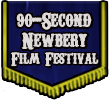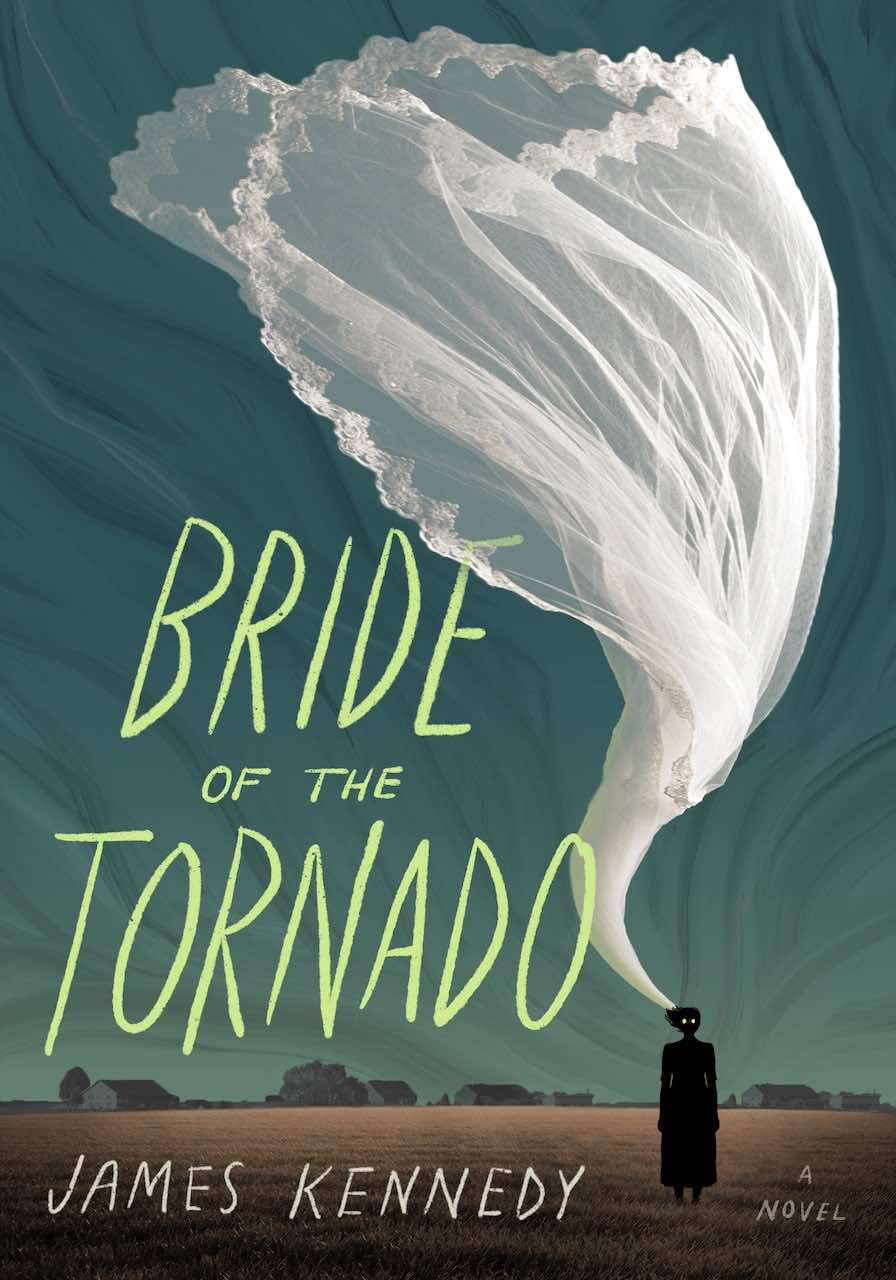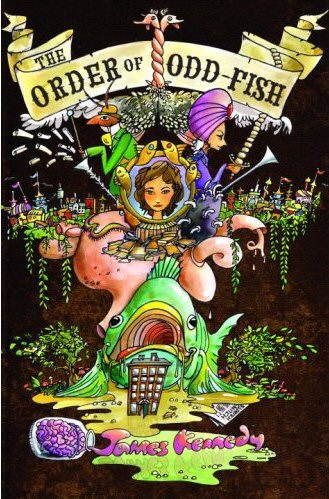How To Make A 90-Second Newbery, Step 1: Watch Great Previous 90-Second Newberys
September 6, 2017
« Episode 4 of the Secrets of Story Podcast: Contentious Dialogue! How To Make A 90-Second Newbery, Step 2: Read The Book And Start Planning »

|
So you want to make your own movie for the 90-Second Newbery Film Festival! But maybe you’ve never made a movie before. Where to start?
The first step is easy: watch lots of 90-Second Newbery movies! By examining good submissions from previous years, you can get a better idea what is possible and what works best . . . and you’ll get ideas for your own work.
I’ve chosen eighteen 90-Second Newbery movies for you to watch. I’ll point out how each one illustrates certain filmmaking tricks and techniques. There are hundreds of little things to know when making a movie. The best way to learn them is just to wade right in. Don’t worry, I’ll guide you through it and make it easy and fun. (And it’s not like you have to watch all of them, just choose the ones that look interesting to you.)
Here’s an idea: for each of these movies, try writing down something that made you laugh, or impressed you, or gave you an idea of what you could do in your own movie. Or even something you think you could do better! What was the “Holy Cow!” moment in each of the movies below—the thing in that movie that you will remember and talk about after you see it?
Most importantly: what will be the “Holy Cow!” moment be in your movie?
Okay, let’s start:
A Wrinkle in Time by Madeleine L’Engle
What Can We Learn From This?
- Take advantage of the cut. In film, a “cut” is a transition from one shot to another. This movie is only 90 seconds long, but there are 25 cuts! So don’t just turn on the camera and do the whole movie in one long continuous take (unless you’re doing that for a specific artistic reason). Every time the camera cuts between one shot and the next, it gives the viewer a jolt of energy. Take advantage of that! (Plus, if you’re cutting back and forth between two characters talking to each other, you can use those cuts to make the conversation snappier, eliminating silence between spoken lines and selecting the best version of each spoken line.)
- Use a variety of shots. There are so many different kinds of shots in this movie: close-up, medium shot, long shot, over-the-shoulder, handheld, etc. By mixing up the types of shots, you can grab and sustain viewer interest. (I’ll talk about different shots in more detail in Step 4: A Crash Course in Cinematography.)
- Move the camera around! The camera is often on the move here: following Meg and Charles as they run outside, panning to reveal Meg’s father, “pushing in” from Meg and Calvin in the foreground to the witches in the background, etc. Don’t be afraid to move the camera, it can bring a lot of energy to a shot!
- Compose your shots. In this movie, it’s clear they didn’t just turn on the camera and point it any which way. The shots are carefully thought out and composed. In a future post, I’ll do a more detailed breakdown of the cinematography of this adaptation of A Wrinkle in Time, including explanations of the Rule of Thirds, camera placement, movement within the frame, and more.
Charlotte’s Web by E.B. White
What Can We Learn From This?
- Give your movie a strong twist that will transform the story. You can make your movie much more interesting by retelling the story in the style of a different genre—like a musical, or a silent movie, or a horror movie, or even another movie or musical (like Star Wars or Hamilton). Here, Charlotte’s Web is done in the style of the opening credits of a 1970s superhero TV show, with the “Spider-Man” theme song rewritten such that the lyrics tell the story of Wilbur, Charlotte, and all their friends.
- Keep your actors on the move. There is a lot of action in this movie: jumping, fighting, and running around. That’s much more fun to watch than people standing around talking.
- Speed it up! Slow it down! Go backwards! This movie uses fun tricks to make the movement even more compelling. For instance, trampolines were used to get “super jumps.” In other places, the footage was reversed, sped up, and slowed down to make feats look superhuman. Such editing trickery is easy to do in standard editing software like iMovie.
- Make cool costumes. If you’re just wearing your everyday clothes, or worse yet, if everyone in the cast is just wearing identical school uniforms, it doesn’t feel like a movie anymore, but just a boring school assignment. Wear something flashy and eye-catching that people will enjoy looking at.
- Find a good location. Charlotte’s Web takes place on a farm, so this group shot their movie at a barnyard. You might not have access to a barnyard, but you probably can go outside, right? It sure beats shooting in the corner of the library, or in a classroom. (In general, outdoors locations are often more compelling than indoors locations.)
- Start with a bang! This movie began with a door getting kicked open, and two masked faces popping out of a treehouse! A kinetic, active beginning like that really draws in the audience. Give your movie a “wow!” beginning—a compelling image or extreme action in the first few seconds to grab the viewers’ attention.
The Story of Mankind by Hendrik Willem van Loon
What Can We Learn From This?
- Consider doing an offbeat book. The Story of Mankind is the very first Newbery Medal winner, and few people read it anymore. That makes it a unique choice for a movie! I encourage you to adapt an older or lesser-known book. You’ll stand out from the crowd, and anyway it’s interesting to read weird older books.
- Consider using a different medium. You don’t have to do your movies live-action. This group used stop-motion Claymation for their movie! It’s time-consuming to create, yes, but very satisfying to watch. Think about what unique medium you can use for your movie: a puppet show, an animated short, a Minecraft movie, a one-person show, a movie in the style of a side-scrolling video game…
- Make use of rhythm. This movie sets up a consistent rhythm, with the same musical riff punctuating comical bits that each last only a few seconds. With this rhythm, the audience is “trained” to expect a new historical period, a new visual, and a new “joke” every 4-5 seconds. The sequences of “Crusades” jokes works precisely because of the established rhythm (notice how the rhythm speeds up as the “Crusades” joke nears its conclusion). Great use of pacing!
- Sound is important. Don’t neglect sound. In particular, a well-placed sound effect can really make a scene work. For instance, the Super Mario Brothers sound effect during the “evolution” bit makes the joke.
Crispin: The Cross of Lead by Avi
What Can We Learn From This?
- With a silent movie, sound becomes easier. Sound is one of the most difficult things to get right. What if there’s bad sound on the set? What if you’re shooting outside and wind muffles all the lines? What if everyone’s speech turns out to be inaudible? This group gets around such problems by telling the story in the style of a silent movie. With a silent movie, you don’t have to worry about flubbed lines, or bad sound on the set, or fussing with sound in post-production.
- You can use the conventions of silent movies to tell the story. If you’re making an old-fashioned black-and-white movie, you can speed up the footage to achieve that “olde-tymey” effect, which of course makes the movie shorter. And silent movies also often have title cards that break up the action and can explain the plot in an efficient way.
- Tell your story in images more than words. This point goes for normal movies and silent movies both. Make sure you tell your story visually, with striking images and action. People standing around and talking does not make for a good movie! Think about Star Wars—even with the sound off, you can understand what’s happening in the story. Make sure you feature in your movie big physical actions (fights! chases! arguments!), with interesting costumes, lots of props, outsized emotions, and fun-to-look-at locations (outdoors is usually better than indoors). Movies are different than books—they’re not about the words, they’re about images moving on the screen. Making your 90-Second Newbery in the style of a silent movie can help you develop your visual storytelling skills.
The Graveyard Book by Neil Gaiman
What Can We Learn From This?
- Use green screen. Outdoor locations are preferable to indoor locations. But what if you’re stuck indoors, and you still want your movie to look great? No problem: do your scenes in front of a green screen! Green screens are pretty cheap to buy online—just some green fabric in the background—and in a pinch, you can even use green butcher paper. Then use Apple’s iMovie, Microsoft’s Moviemaker, or almost every other movie editing program to substitute an image or a video in for the background of your scene.
- Supplement your green screen. Notice how the filmmakers added props on the set to supplement the green screen’s background image: for instance, in the graveyard scene, there is the green screen background of a graveyard, but there are also gravestone props in front of the green screen. That helps the scene feel three-dimensional, and less obviously a green screen.
- Don’t forget to vary those shots! When you use green screen, there’s a temptation to make every shot more or less the same: a full-body shot of two or three characters standing and talking in front of the green screen backdrop. Make sure you still vary the shots, putting in closeups, over-the-shoulder shots, etc. In this movie, check out the very effective “insert” shots: of a hand on a doorknob, feet walking up stairs, a knife raised in the air, etc. You can very build a evocative scene through a lot of little details like that!
- Pay special attention to sound. Note the creepy music throughout (taken from the soundtrack to the horror movie Under the Skin), the sound effects, and slowed-down voices (for the ghouls) and the sped-up voice (for the Sleer). All of this was done in iMovie using the built-in audio tools, nothing fancy or expensive! But even more important, notice how all the dialogue is super clear. We can understand every word that is being said. If you need to dub in dialogue later to make muffled dialogue clearer, do it!
- Don’t be afraid of voiceover. This movie uses a voiceover that explains the plot and moves it forward quickly. This can be a very effective device! Just don’t overdo it. Remember, the story needs to be primarily shown by the movie, not told by a voice. This voiceover does a good job of setting up each scene, and then getting out of the way so we can watch the scene unfold.
- Special effects don’t have to be expensive to be effective. This movie was very resourceful in its special effects. All they needed was an off-the-shelf vampire costume, some scary masks, and some face makeup to get a great result. The tentacles of the stuffed animal “Sleer” were operated by strings pulled by kids just off-camera. And the lights flashing on and off were pretty scary . . . but the effect was accomplished by just flipping an everyday light switch on and off rapidly!
Ramona and Her Father by Beverly Cleary
What Can We Learn From This?
- Consider doing a musical. Musicals are always popular, if they’re done well! But a bad musical is painful to watch. A good musical is going to mean a lot of hard work. Make sure your lyrics are super tight: every line should either push the story forward, express an emotion, or be funny (ideally, all three at once!). You can write your own music, but it’s also OK to just change the words to existing songs, like this Ramona and Her Father (find a “karaoke” version of the song online and record the performer singing along with that). Extra points if your rewritten song ironically undermines the spirit of the original song: in this movie, Pharrell Williams’s “Happy” is rewritten such that every character sings about what’s making them miserable!
- If you’re doing a musical, pre-record your songs. Don’t try to actually sing the song for real on set. Record your song beforehand and get it perfect. Then, play that recording while you’re shooting the video part, and have the actors lip-synch along with it. Then, in post-production, just lay that audio track you’d recorded earlier over the video you shot. The audio quality will be much better, and you won’t have to do as many takes.
- If you’re doing a musical, add subtitles for the lyrics. It can be a little tedious to do, but it’s worth it, because sometimes it’s hard to understand sung lyrics. Any standard movie-editing software has the capability.
Ramona and Her Father by Beverly Cleary (James Bond Style!)
What Can We Learn From This?
- Consider doing your movie in the style of another movie. Here’s another version of Ramona and Her Father, but presented as a James Bond movie. If you’re going to do a genre twist like this, it’s the most fun when the genre you choose is as far as possible from the original story. The gentle, suburban, low-stakes family comedy of Ramona and Her Father is completely opposite from the violent, international, high-stakes spy thrillers of James Bond. Watching these two different sensibilities chafe against each other is what makes this movie entertaining.
- Commit to the premise. If you’re going to do a genre twist like this, make sure the genre is present in every scene, not just one or two. You have to fulfill the “promise of the premise.” For instance, in this case, it’s essential to include all the James Bond tropes: the James Bond theme music runs throughout the movie, James Bond wears a suit and speaks with an English accent, there is gunplay and fistfights. The scenes that occur in every James Bond movie are included: a debriefing scene with the boss “M,” a gadget scene with the gadget guy “Q,” etc. We have an iconic Bondian villain (here, a riff on Blofeld), James Bond drinks a martini “shaken, not stirred,” and he makes a bunch of ridiculous double-entendre jokes like Roger Moore. Using these genre trappings, every scene becomes an easy-to-identify joke or “bit” in which the basic story of Ramona and Her Father is retold through a James Bond twist. The joke wouldn’t work if you only did one or two of these things. You have to do a Bond-specific thing in every scene to make the joke work.
- Shoot a lot of footage and take advantage of it in the editing room. When you’re on set, shoot a lot of reaction shots and multiple takes from different angles. It will come in handy in the editing room! For instance, while editing this movie, the filmmakers realized they needed shots of Beezus’s and Mrs. Quimby’s exasperated reactions to James Bond’s “It seems I’ve carved out a place for myself in this family” pun, but nothing was shot! So they used footage that was randomly caught on camera in another scene, and spliced that in for the reaction shots. Same when “Blofeld” is laughing in reaction to James Bond’s despair—that was actually just the actor cracking up when he thought the camera wasn’t rolling.
Mr. Popper’s Penguins by Richard and Florence Atwater
What Can We Learn From This?
- Make your genre twist share something in common with the story. Here’s another example of a great genre twist on the original material. What could be more opposite to the mild domestic animal caper of Mr. Popper’s Penguins than a brutal zombie apocalypse? And yet the two stories share something in common: whether the story is about penguins or zombies, either way it’s about a faceless, all-consuming horde. Sometimes the choice of genre can bring out aspects of the original story you never noticed before!
- Explore aspects of the story the original book leaves unexplored. The original book doesn’t have much to say about the Poppers’ marriage. But surely Mrs. Popper would be exasperated by Mr. Popper’s unrepentant penguin-mongering. This movie gets some good comedy out of that tension by showing Mrs. Popper’s increasing impatience and disgust with Mr. Popper. Find the unsaid or unexplored thing from the original book and say it, explore it!
- Sometimes it’s okay for your movie to go completely crazy, if it’s still in the spirit of the book. Obviously, in the original book the penguins never rampage through New York, blow up the Statue of Liberty, or feast on human flesh. That said, the penguins do get in enough trouble to land in jail, just as they do here. Find a way to tell your story that honors what’s in the book, while still fulfilling your genre twist and making the story your own.
- Make each scene have a cause-and-effect relationship with the next scene. The movie has some very effective transitions that keep the story moving. Mr. Popper says “The way we can feed them is by putting on a penguin show”—and then we cut straight to the penguin show! Try to sequence your scenes like this as much as you can: each scene logically leading to the next scene by easy-to-understand cause and effect.
- You don’t have to spend a lot of money on costumes, just be clever! The penguin costumes in this movie were created with nothing more than white and orange paper, black shirts, and some white T-shirts that were cut out into a bib. Simple, and yet they look great (and kind of creepy)!
The Giver by Lois Lowry
What Can We Learn From This?
- Um, think twice before making a movie of The Giver? This video happens to be a brilliant adaptation of The Giver. But let me be frank. If you’re thinking of making a 90-Second Newbery of The Giver, please reconsider. Every year the 90-Second Newbery receives dozens of adaptations of The Giver, more than any other book by far. After a while, they all run together in my mind. And it’s not fun if an entire 90-Second Newbery screening is just different movies of the same book! You’re more likely to be featured in a live screening if you don’t do The Giver. (That said, this particular movie is amazing.)
- A fun genre twist: a one-man show! Okay, let’s say you’re dead-set on adapting The Giver. Then make sure you have a fantastic genre twist to set yourself apart from the pack . . . like this one! A one-person show like this can be really hilarious, but only if the actor commits to portraying many extremely different characters, with a lot of absurd costume changes, different voices, and rapid cuts. The quick cuts, mix of voiceover and spoken dialogue, and inventive visuals make this fun to watch. (What I’m trying to say is, if you do do a one-person show, don’t just make it you mumbling into your laptop camera for 90 seconds!)
Bridge to Terabithia by Katherine Paterson
What Can We Learn From This?
- A clever enough idea can carry a whole movie. Although eye-catching costumes, skillful sound design, and even green screen visuals are all great, there’s no substitute for a truly clever idea. For this movie, the clever idea is that almost every line of Bridge to Terabithia functions as a melodramatic “ominous foreshadowing” of the death of its beloved manic pixie dream girl character Leslie at the end. Notice this idea only really works because of the horror-movie musical riff than keeps getting played every time ominous foreshadowing happens, which clues the audience in on the nature of the joke. This is another one of those jokes that gets funnier the more frequently and quickly it happens.
- When it comes to acting, go big! You only have 90 seconds, so there’s not much time for subtlety. Go big for your acting choices! Notice that in this movie everyone really commits to their acting. Nobody is doing it halfway. Nobody is mumbling or acting embarrassed of their movie. They’re all committing to it 100% and that’s why it works.
- Use rhythms in your scenes! I referred to the rhythm of scenes in the Story of Mankind notes above. Same thing here: the “ominous foreshadowing” musical riff that keeps getting played sets up a joke that gets funnier the more you repeat it.
Frog and Toad Together by Arnold Lobel (Puppet Show)
What Can We Learn From This?
- Try making your movie with puppets. Making the movie with puppets means everything is shot on a smaller scale, which gives you an excellent opportunity to totally control what you’re shooting. Sets are easier to make and puppet movement is easier to control.
- Film the puppets first, dub in the dialog later. When you’re working with puppets, you don’t have to worry about sound on set because you can always dub in all the dialog later. That makes it much easier, since it’s hard to get sound right on set.
- Take advantage of the physical comedy and crazy movements puppets can do. This movie makes the puppets do all kinds of ridiculous things: climbing a mountain, running top speed through a forest, squeezing through a door, and more. It’s fascinating to watch! So if you’re making a movie with puppets, then for the love of Pete, don’t just have the puppets stand there and talk. Take the opportunity to make the puppets leap, run, dance, and do all kinds of exaggerated movements.
Frog and Toad Together by Arnold Lobel (French Music Video)
What Can We Learn From This?
- Don’t be afraid to switch the genders, or even the species, of characters! The original Frog and Toad are two male amphibian bachelors. But this adaptation makes them into young human lovers, one male, one female. And the movie is much more interesting for it.
- Tell your story with actions and images. Not a single word is spoken in this movie, and the song is all in French, and yet we know exactly what is going on. Learn how to tell your story visually, and your movie will be much more watchable than if it were just a bunch of people standing around talking about the plot.
- Be bold and make extreme aesthetic choices. This movie reimagines a cozy tale of two amphibian bachelors into a frisky French music video about young lovers. That’s creative, and it totally transforms the story! Stretch yourself to find unique angles on the material like this one, even if (or especially when) it strongly contrasts with the book you are adapting.
The Whipping Boy by Sid Fleischmann
What Can We Learn From This?
- Take advantage of cheap and easy special effects. There are a lot of special effects in this movie—lasers, explosions, even swinging light sabers! Seems hard to do, right? Must’ve cost some serious money? Absolutely not! It was all accomplished with a piece of software called SaberFX that’s only $24.99!! You can do special effects, too!
- If you’re going to do something in the style of another movie or franchise, make sure you fulfill the “promise of the premise.” Just as with the Ramona and Her Father done in the style of James Bond movie above, if you’re going to do it in Star Wars style, you must fulfill the “promise of the premise” and include as many Star Wars tropes as possible: the opening crawl, the John Williams music, a lightsaber battle, aliens, spaceships, and Star Wars quotes and references. The more you tell the story in terms of the genre choice, the more satisfying it will be.
- Make bold acting choices. You only have a few minutes to make an impression. Go broad with your acting. Notice how excitable and frantic the prince character is, and how monotone and phlegmatic the droid is. Use vivid contrasts to make different characters distinguishable!
- Your movie’s too long? It better be good. Yes, this movie is a little too long for a 90-Second Newbery, but the judges will cut slack for longer pieces if they’re truly ambitious and inventive.
Where the Mountain Meets the Moon by Grace Lin
What Can We Learn From This?
- Get artistic. This movie is done entirely in elaborate shadow puppets. Shadow puppets are hard to make and manipulate, but they are quite beautiful, and you can get lots of cool effects!
- Take advantage of what puppets can do. If you’re using puppets, you have freedoms that you don’t have with live-action. You can totally control the image we see, since you’re making all the characters and sets yourself. So make sure your puppets are always doing something interesting. Again, a puppet show doesn’t mean you can just have long shots of pieces of paper twitch around while you mumble off-camera. Make it visually interesting!
- Cut, cut, cut the story. Lots of the original story got thrown out the window in order to keep this movie down to just 90 seconds. That’s OK! This movie still tells the main story very well! You have to be merciless in editing down the material.
Dark Emperor and Other Poems of the Night by Joyce Sidman
What Can We Learn From This?
- Consider adapting a book of poetry. Some Newbery-winning books aren’t stories, but rather books of poetry like this one. Poetry makes for good 90-Second Newberys because they’re short and open to interpretation.
- You can do a lot with puppets! Again, these kids took advantage of the fact that, with puppets, you have total control over your set. They built a “forest” and created all the animals themselves, and moved the camera around that set. Notice also how the camera and “animals” are always MOVING. Nobody wants to watch some motionless paper, no matter how beautifully drawn and crafted.
The Twenty-One Balloons by William Pene du Bois
What Can We Learn From This?
- Try writing your own songs! In the musical of Ramona and Her Father above, all of the songs were takeoffs of existing songs. With this musical, however, all the songs are original! This might be your chance to try your hand at your own songwriting.
- Costumes matter. The more extreme and eye-catching the costumes, the better! It proves that you spent time on the movie, and reassures the viewer that this movie will be worth watching.
Heart of the Samurai by Margi Preus
What Can We Learn From This?
- Consider doing your movie in another language! This movie is mostly in subtitled Japanese. If you have skills in a language other than English, or if you’re learning a different language at school, try making your 90-Second Newbery in that language! In this case, it makes a lot of sense to do it in Japanese, because the main character is Japanese. But your language choice doesn’t necessarily need to be reflected in the book. How about doing Johnny Tremain entirely in Spanish? Or Charlotte’s Web in Mandarin?
- Don’t forget to add in music. The right music can really put your movie over the top. Appropriately enough, this movie of Heart of a Samurai used music from the soundtrack of an old Akira Kurosawa samurai movie, Yojimbo.
- You can switch your medium in the middle of the movie. In this movie, some scenes are done live-action with green screen, and some scenes are done with handmade model boats, oceans, whales and horses. But it all works together. Don’t be afraid to switch from one medium to another in the middle of the movie.
- Fight! Fight! Fight! If there’s a physical fight in the book, definitely feature it in the movie! People love to watch fights!
Millions of Cats by Wanda Gag
What Can We Learn From This?
- Make your movie in Minecraft! Making your movie in Minecraft allows so many great possibilities. For zero budget, you can make amazing things in Minecraft that it would be almost impossibly expensive and time-consuming to construct in real life. So if you’re going to use Minecraft, the judges will expect you to take full advantage of the freedom it gives you. Exploit the vast scale of the world, and make use of the various interesting objects you can craft, and the creatures you can generate. Your movie should never be just a bunch of characters standing around talking! In Minecraft, you can make anything, and you can put the camera anywhere you want, and you can control that world utterly . . . so take advantage of that, and wow the audience!
That’s all for Step 1 of “How To Make A 90-Second Newbery.” In the next post, we’ll talk about choosing a Newbery-winning book, reading it, figuring out your own unique twist on the material, and marshaling the resources you need to make a great movie.














